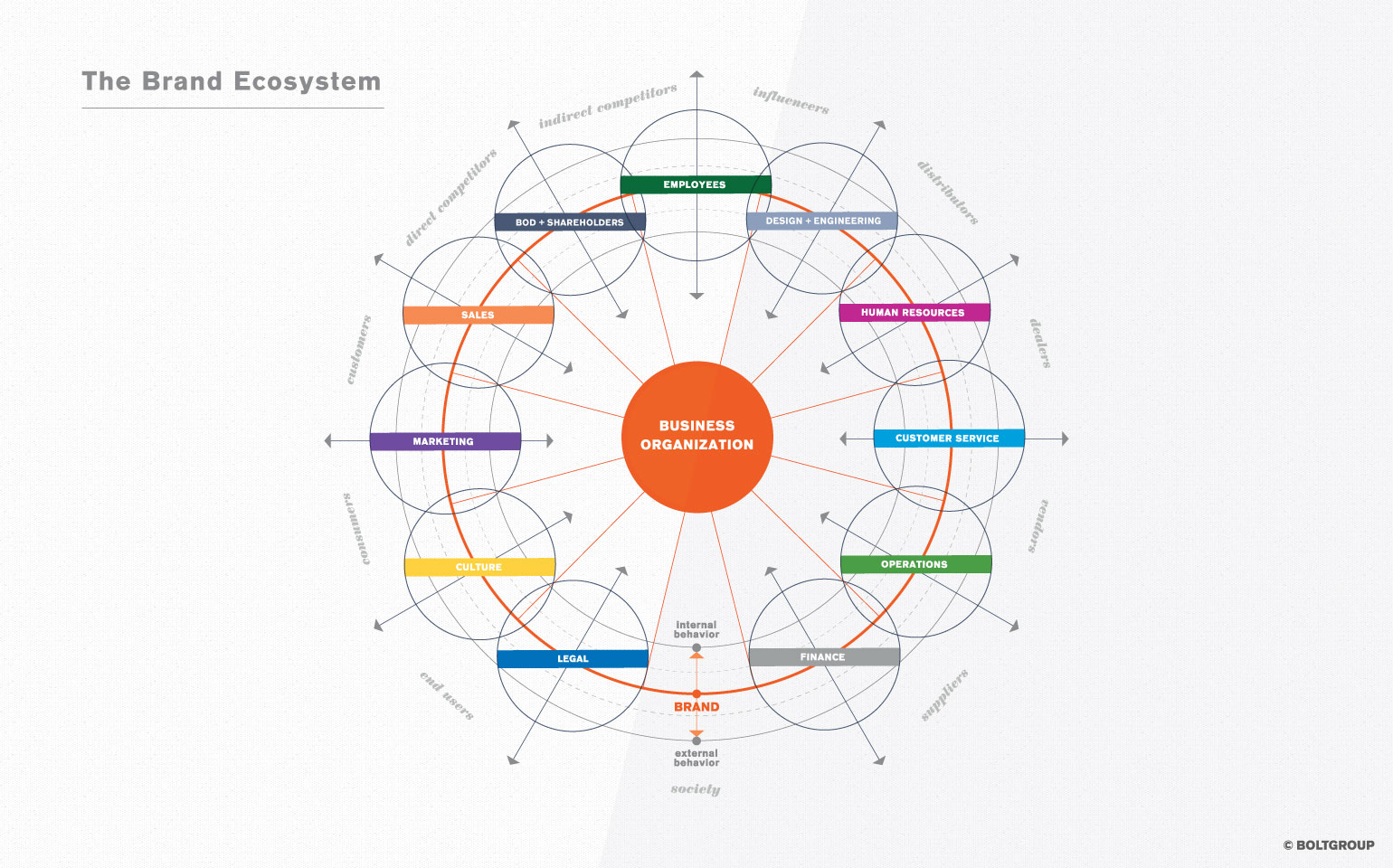BOLTGROUP principal, Jamey Boiter, recently wrote a white paper about the importance of creating connective tissue within your brand’s ecosystem. It is that multi-faceted connection that enables your brand to continue thriving at any level, and this connective tissue is critical to generating value and preference for your brand.
Supporting elements of your brand must exist in every sector of your business. As an ebb and a flow. Company departments shouldn’t simply pay lip service to the brand foundation, but rather should practice it—each in its own form.
Let’s take a look at some best practices to support brand in the major areas of your organization:
Employees—These are the most important assets in any organization. Create an environment your employees can own…something they’re proud to be a part of. How your teams communicate and interact is a direct reflection of your brand. If your team radiates a sense of pride in everything they do, you will see them become true ambassadors of your brand. More about that here.
Design + Engineering—Make sure the product you’re producing aligns directly with your brand’s vision and purpose, as well as with the ultimate visual identity. Brand should always be front of mind in new product development. Products are often your customer’s first real experience with your company. If the brand is built around empathy and understanding, then you must produce a product that truly responds to a consumer need or challenge.
Human Resources—This is the same idea as with employees and culture. It is key for HR to understand the internal brand culture and protect it. Selecting the right candidates for the brand, and setting them up for success. Keeping daily activities in line, and promoting the overall wellness of an organization’s employees. HR is the critical connection between the C-suite and employees to ensure that the brand’s purpose is being communicated seamlessly.
Customer Service—Consider how you communicate and problem solve with your customers. This is often the first personal connection a consumer has with the brand, and everyone from your call center to your receptionist should be delivering the brand with empathy and understanding. Creating trust builds equity.
Operations—While sales & marketing communicates the value of your product, operations creates that value. Operations sets best practices for production and distribution. These steps need to align with the brand’s promise. For example, if a brand promotes itself as environmentally conscious, operations should procure green processes and materials, and minimize waste in production.
Finance—Investing in your brand is always a good practice, but it’s often needed when you least expect it. Having a finance department that knows when to scale budgets across advertising, product development, and sales is critical.
Legal—Again, it’s about your people. Create a sense of pride so they can represent your brand on any level. Your legal team should possess empathy, but also protect the brand and its assets at all costs. You’ve put a lot of time into a unique value proposition for your business; be sure to protect it properly.
Culture—Practice what you preach. Create a team environment that emphasizes the importance of your brand pillars…in daily emails, project management, team building events, etc. Having a strong internal culture will make it that much easier to project the brand externally.
Marketing— Brand isn’t born in marketing; it should start at the top, working its way down. However, the execution or the filter of the brand exists most fully in Marketing. Every delivery needs to be on target—from visual to verbal. Marketing needs to nurture the brand at every touchpoint to ensure consistency. The brand mission, vision, and purpose is their bible.
Sales—These individuals need to know the value propositions inside-out. That way they can precisely weight the brand pillars among your company’s different audiences. Retailers and vendors will connect with your brand differently from consumers. Good salespeople know their audiences and know how to make that shift.
BOD + Shareholders—Finally, every meeting should have a discussion that references the brand foundation. Vigilantly keeping business strategy aligned with brand strategy will umbrella all areas of your company with the brand foundation.
Once every single department of your business is able to embrace, properly filter, and execute your brand’s foundation, you’ll begin to see an ecosystem emerge, creating the lifeblood needed to transform your brand into your most powerful asset.
